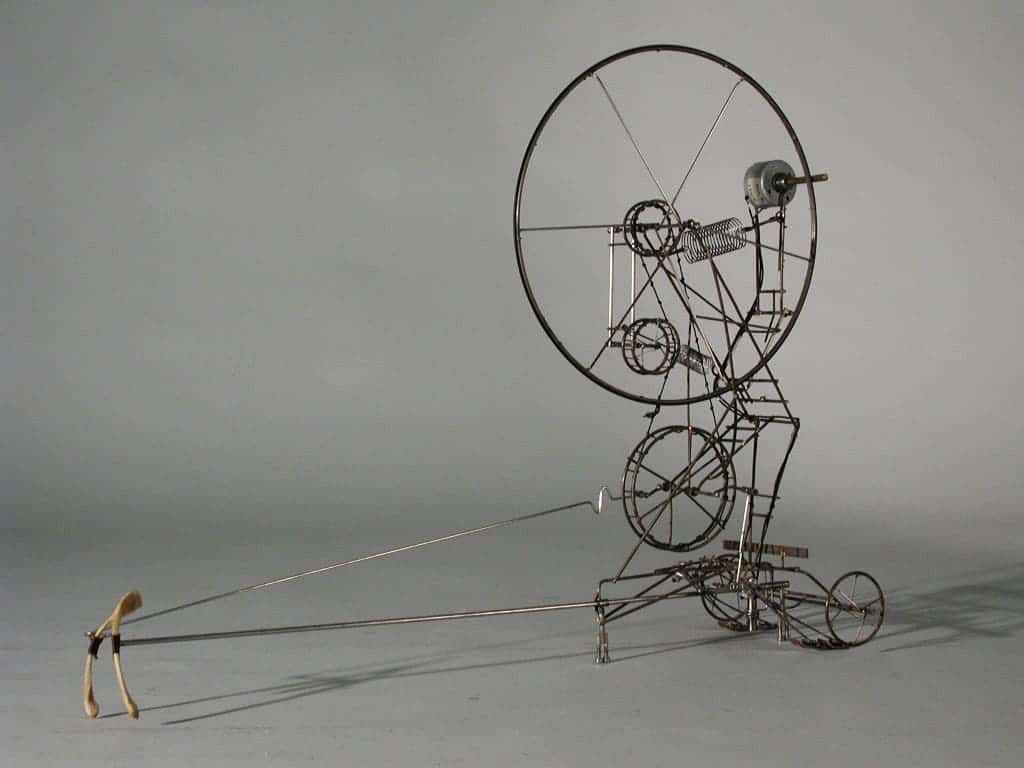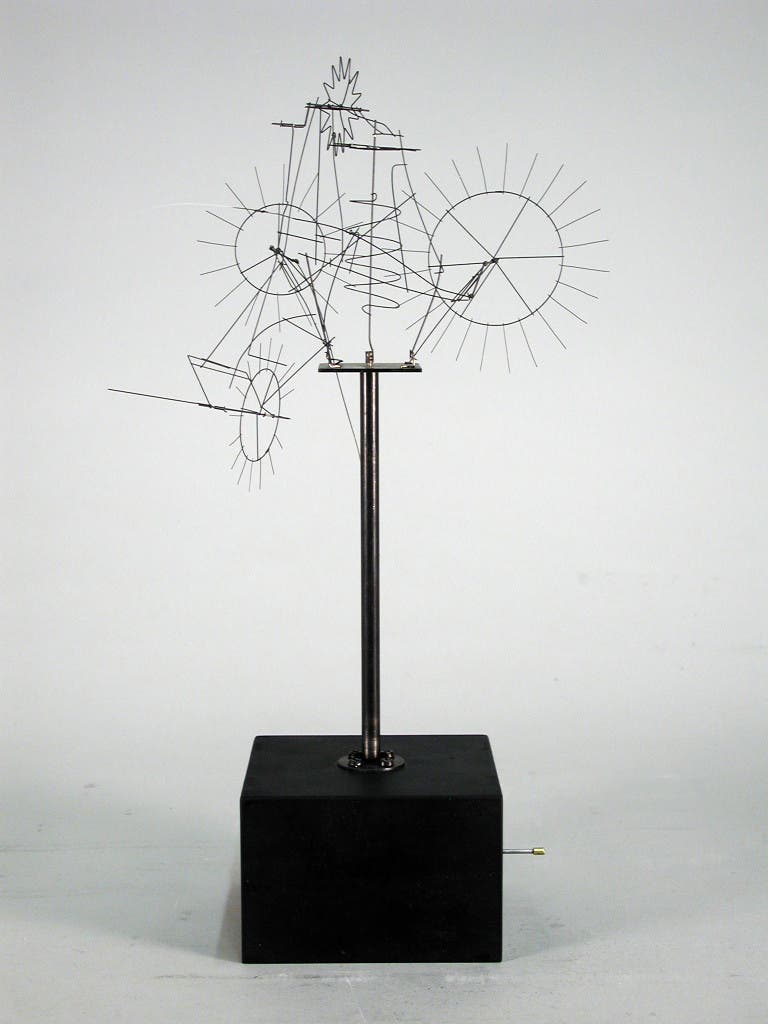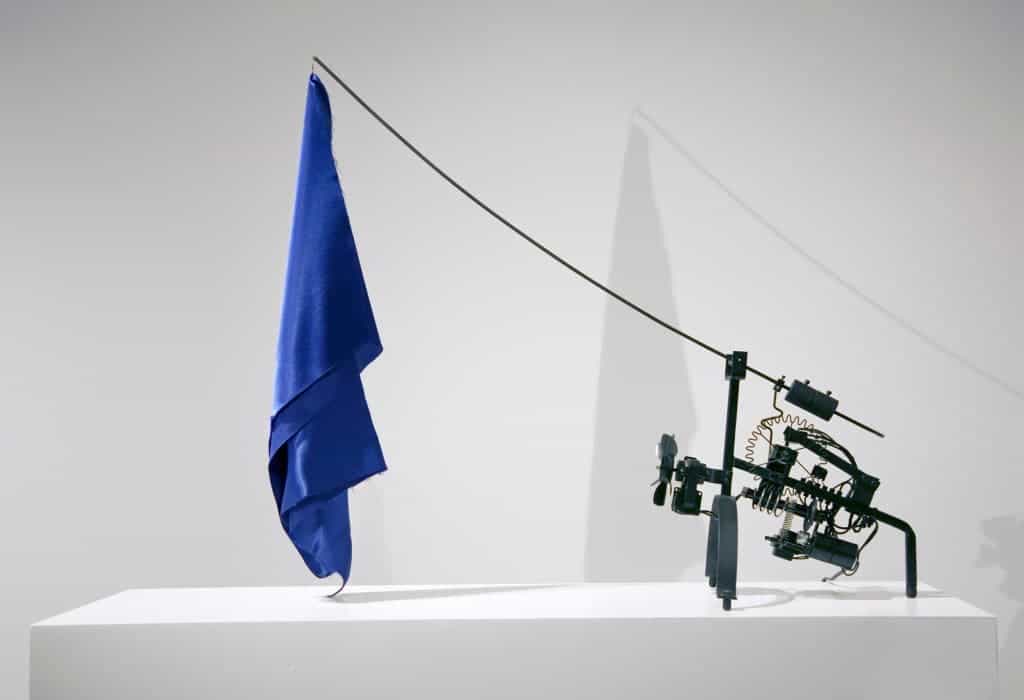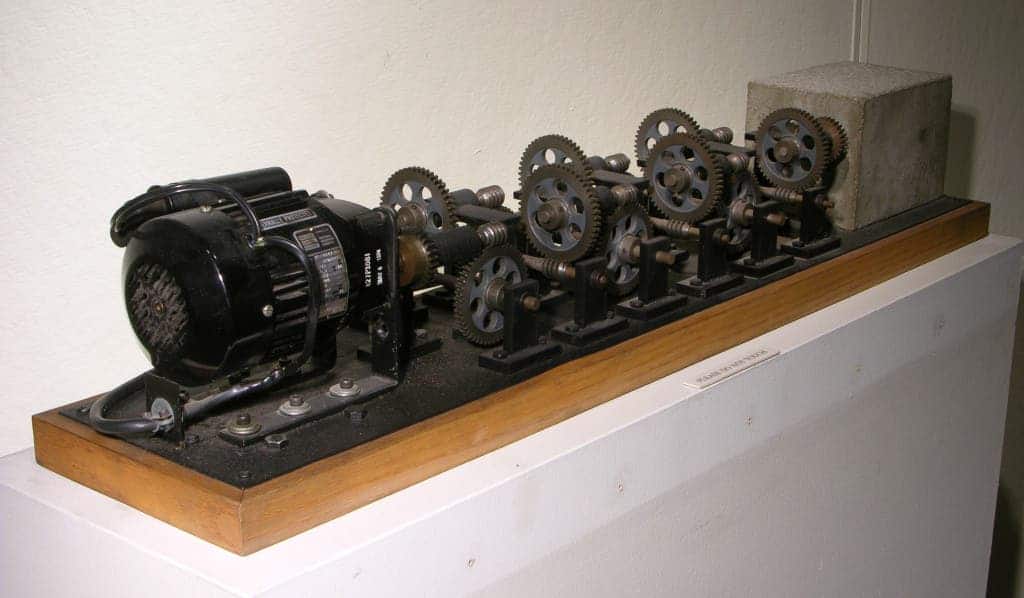
Arthur Ganson is a mechanical engineer by trade and a kinetic sculptor at heart. His mechanized devices spur up spirit from cogs and wires, as his sculptures move with subtlety and grace, often in a chain reaction of energy à la Rube Goldberg. His creations are rooted inside deep philosophical concepts, but at the same time shine with an unparalleled dash of humor – a small reminder not to take life too serious.
Arthur Ganson’s art is by all means impressive, and there is no way of understanding this other than taking a remote glimpse upon these kinetic contraptions for yourself. Outlined below you’ll find some of these amazing sculptures, some decades old, alongside a brief interview with the former artist in residence at MIT himself, who was kind enough to answer some of my questions.
Machine with 23 Scraps of Paper

Arthur Ganson: There are many different feelings that go through me in the process of making a piece. In the beginning, before the physical process of building the piece begins there is much light-hearted dreaming and often moments where I feel a deep inspiration. This time can be very fluid because the ‘form’ of the piece can change dramatically. It is not material yet! The building process itself has many aspects and depending on the particular piece, some things are more predominant. As a rule, no matter how much imagining I do, the piece must be built in order for me to know how well it will ‘speak’. In this regard I often feel much anticipation, especially if there is much building that must happen to se anything. Sometimes a piece will not work in the end. This can be a disappointment if I am not able to re-work the idea. The process is often filled with much determination and excitement throughout. Depending on the piece, there can be sublime moments of building or tedious moments of building…. or eureka moments or surprises……
Machine with Wishbone
ZME Science: The intricate mechanisms that you employ in your art can be viewed by many as complex, however some I’ve seen, as I did my research, believe there are many redundant parts to it. How do you believe the Rube Goldberg machine-esque approach to your mechanisms aids in amplifying the sentiment surrounding the sculpture?
Arthur Ganson: There are no un-necessary parts to the machines. Every part is there for a reason. I loved looking at Rube Goldberg drawings when I was a kid, and now his name is synonymous with absurdly complicated systems that do something very simple. I guess in one sense that’s partly true with some of my machines, but the impulse for me is not to be needlessly complex for the fun of it. When I started I was making things way more complex than necessary, but now I think I’m getting more simple and bringing things down to the essence. If they come across as rube goldbergesque is more because the observer doesn’t understand the machine. All aspects of the way something is built and exists in space will effect the nature of how it speaks emotionally. All decisions speak to the state of being of the creator.

Faster!
ZME Science: Much of your art seems to come to life, as various gears or wires twitch and turn in a chain of events that describe a sublime motion. This all seems so very precise, so intricate – I can only imagine the amount of time and patience you must dedicate. How do you come about building it piece by piece, aligning each part together with utmost accuracy? Do you start from somewhere and then just improvise along the way or do you work at a plan before starting, like computing, sketching and such?
Arthur Ganson: I usually start the work in my mind and then move to very general sketches that help me to visualize the overall proportions and mechanical systems and relationships. I rarely work by just starting somewhere and seeing where I end up- it’s not in my nature and usually the piece necessitates a good degree of thought in order to solve the real mechanical issues. However, nothing is a rule! Some of the fragile machines are pretty free in their evolution. Working with wire does not require a high degree of accuracy. Actually, it’s the place where I can be the most relaxed. The fragile wire pieces are the closest to oil painting that I can come. Here, I’ll create a staring point and have only a general sense of how the machine will fill space. If there is no particular mechanical problem to solve and the piece just has to move, that’s very open-ended.

Cory’s Yellow Chair
ZME Science: On the same subject, how does the process behind your art creation looks like? I’ve noticed that you’ve went to the extent of making your own tools for the custom work and that many of your parts are from various abandon mechanical objects. What’s your take on the objects you later use as components?
Arthur Ganson: There is much invention in the process and often it has to do with jigs and tools to make the piece. Currently I’m working on a new version of Cory’s Yellow Chair and I’m working on all kinds of jigs that will allow me to make gears with more conventional teeth- because this piece requires this in order to move properly. This is a situation in which the wire gears won’t translate power properly and the essence of the piece is it’s movement. I’m able to incorporate found objects sometimes, but I don’t have any particular take on it. Sometimes the piece is built around a found object, but I generally don’t work in a way where I’m collected a bunch of things and then try to assemble the mass into something.
For more videos of Arthur Ganson’s kinetic sculptures visit his website.


